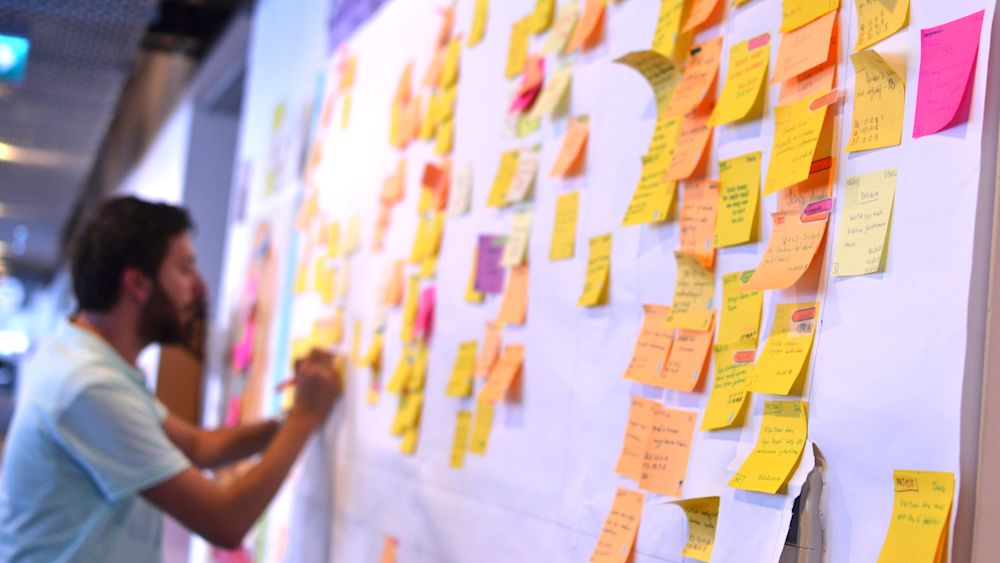The Key to Cultivating an Agile Mindset at Work
Table of contents
When a person behaves one way at work, only to turn around and present themself in a contradictory manner outside the office, an internal fragmentation materializes. One that is disjointed and confusing, not only to those who interact with the person, also within the self. Which is the authentic version? The Org's expert contributor examines how agile is not merely a concept we apply at work, rather an embodied way of living life in its entirety.

Agile Is Relational
We hear a lot about the importance of having an agile mindset; what does this mean exactly? While the 2001 Agile Manifesto has four values and 12 principles, today, we will look at three overarching concepts that, when applied, arguably encompass the manifesto in its entirety.
- Individuals and interactions over processes and tools. To break it down into easier language, the first value of the Manifesto speaks to the importance of relationships rather than informing people how to do their work. And there may be a logical reason why the authors elevated the necessity for relationships as the first value given humans are wired for interpersonal interactions.
- Customer collaboration over contract negotiation. Wait a second; value three of the Manifesto sounds eerily familiar to the first. What is at the heart of collaboration? You guessed it — cultivating relationships.
- Build projects around motivated individuals. Give them the environment and support they need, and trust them to get the job done. Here, the passage is an Agile Manifesto principle. Once again, we see the common relational thread. When we support, empower, and trust people, we are building the infrastructure of healthy relationships.
Humans are relational creatures, regardless if you’re at work, having a cup of tea with Mom, or engaging with members in your community. Being Agile means you're in an active relationship with yourself, your environment, and others. And having an Agile Mindset means you are open and available to developing relationships; inside and outside the boardroom.
Let’s return to the concept of possessing a fragmented mask. To be in a relationship with the self, environment, and others means living authentically, removing the unhealthy false self, and demonstrating consistent behaviors, no matter who the individual interacts with.
Donald Woods Winnicott (7 April 1896–25 January 1971), an English psychoanalyst, a pioneer in developmental psychology, defines the unhealthy false self as one that fits into society through forced compliance rather than a desire to adapt.
Agilists know iterative adaptation is a cornerstone of how we work, and when we remove the core element, we become stagnant, stuck in our behaviors.
Real-life examples of the false self are based on certain beliefs that we take on to better fit into our world. A few scenarios include:
- Jane acted dismissive with her client’s third feature request, yet she shows up every day to care for her Dad in the nursing home.
- Clark focuses his attention on developing code to the highest standards; however, his wife constantly complains he trods into the house with dirt-riddled boots, leaving a mess everything he walks.
- Tracy works upwards of twelve hours a day on her agile team, despite feeling exhausted. She believes if she achieves more, she will be more valuable to the team. Her husband and two children frequently express concern they feel neglected.
In each circumstance, Jane, Clark, and Tracy face relational conflict, behaving inconsistently between work and home life.
Gestalt Therapy & The Agile Mindset: The Perfect Partnership
Given I am a Gestalt Psychotherapy practitioner, a psychotherapeutic modality gaining in popularity in North America, I see distinct parallels between the ideologies underpinning Gestalt and Agile.
Let’s start with the word Gestalt. The meaning equates to the sum of all parts equals the whole. Essentially, if you live an integrated life, who you are at work, with friends, and with family is the full you.
Yet, when life is fragmented, Gestalt calls for personal awareness to explore the underlying reasons why an individual subconsciously or consciously lives a divided life.
When personal division occurs, the ability to hold sustainable relationships diminishes due to the mask being held up, preventing the true self from emerging. What a shame for the person suffering behind the mask and for everyone around them to miss out on experiencing their authentic nature.
Gestalt Therapy & Agile: Moving With The Same Objective
Like Agile coaching practices, Gestalt Psychotherapy is not here to correct human behavior. The objective is to raise awareness and a level of consciousness to unearth specific actions or anti-patterns. What action the client chooses to take is up to them.
For example, Simon is a Product Owner who writes user stories too large in scope. The stories are consistently caught in the workflow for long periods of time, and the data clearly shows his work as problematic outliers in the system.
An Agile Coach can present data demonstrating the challenge to Simon; however, his desire to change rests upon the Product Owner’s motivational factors.
Gestalt therapy works in precisely the same manner. If a client demonstrates conflicting true-false self behaviors, it is the psychotherapist’s role to help the client see the nature of their being and explore the impact on self, environment, and others while waiting to see if the new awareness will lead to change, leading to the creation of sustainable relationships.
To Conclude
Behind most of the Agile Manifesto’s values and principles lies a relational backbone. Without building the foundation of trust, empowerment, and collaboration, we have nothing.
Living in an agile manner in and outside of work calls for consistency in behavior. When we remove the false sense of self and interact with others with a level of sameness, we are bringing our “full-self” to work, embodying the true nature of Gestalt.
When you consider the agile values and principles, are there behavioral inconsistencies within your work and home life? How will your relationships improve if you bridged those false self gaps?
Get in front of millions of visitors and job seekers.
- Showcase your company culture to a vast community of professionals
- Host your team on a free org chart to keep employees aligned
- Post jobs on our free job platform for high growth startups


The ORG helps
you hire great
candidates
Free to use – try today